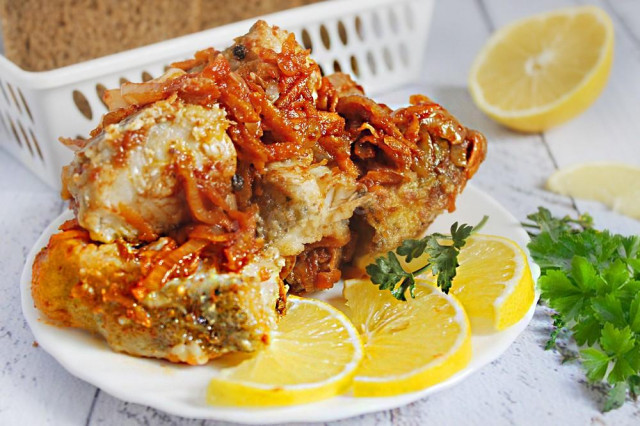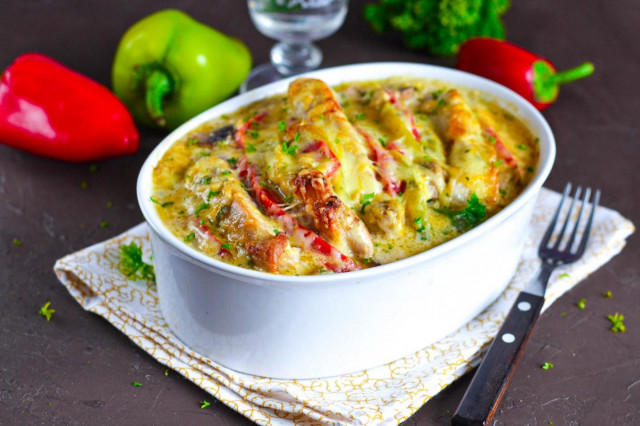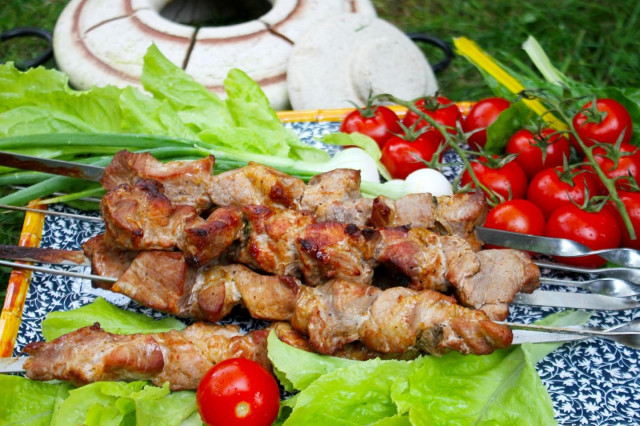Composition / ingredients
Step-by-step cooking
Step 1:
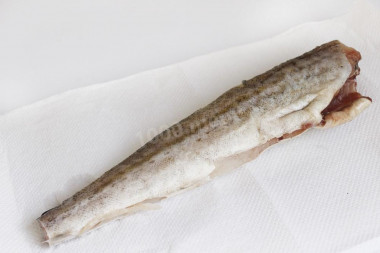
How to make pollock with carrot and onion marinade? Prepare the ingredients according to the list. Defrost the fish, if necessary, by transferring it to the bottom shelf of the refrigerator in advance. Do not defrost it to the end, so the carcass will be easier to clean and butcher. Rinse, cut off the fins, tail, gut, be sure to remove the black film from the inside of the abdomen, as it will give bitterness. Rinse the fish again and dry it with paper towels.
Step 2:
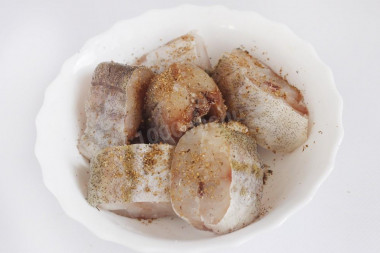
Cut the fish carcasses into 7 pieces. Roll each slice in a mixture of salt and cloves. Leave for 15 minutes to marinate.
Step 3:

Then roll the fish in flour.
Step 4:

Pour refined vegetable oil into the pan, heat it well. To check whether the oil has warmed up well enough, you can do it in a simple way. Lower a wooden spatula into it, if bubbles have gathered around it, then you can start the frying process. Lay out the pieces of fish and fry them on both sides over medium heat until golden brown.
Step 5:

Transfer the fried pollock to a bowl, let it cool.
Step 6:
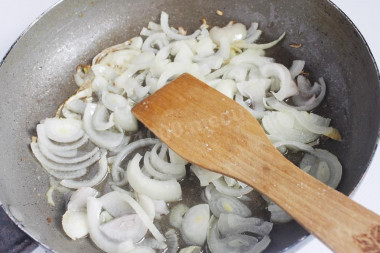
Take a medium-sized onion. Peel it from the husk and cut it into thin half rings. To prevent onion juice from irritating the mucous membrane of the eyes so much, rinse the onion and knife under running cold water before slicing. If the cutting board is greased with a piece of lemon, it will not absorb the unpleasant onion smell. Fry in a frying pan with vegetable oil for about 5 minutes until transparent. You can add a pinch of salt, then the onion will become more juicy.
Step 7:

Wash the carrots well with a brush under running water, peel, grate on a coarse grater or cut into strips. Keep in mind that the final result will depend on how you chop the carrots. Grated carrots during heat treatment will turn into mush and mix evenly with the rest of the ingredients, and sliced into cubes will retain its shape. Send it to the onion, stir and simmer on low heat for another 5 minutes until it becomes soft.
Step 8:
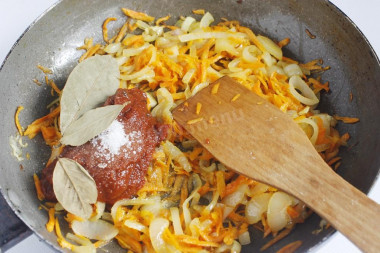
Mix tomato paste in a cup with boiled water and pour it into a vegetable roast. Add sugar (or a sweetener that is not afraid of heat treatment), salt, pepper and bay leaf. Tomato paste can be replaced with tomatoes in their own juice, fresh tomatoes or ketchup. If you use ready-made spices for fish, be sure to read the composition on the package. If there is salt in the mixture, consider this when you salt the dish, so as not to over-salt.
Step 9:
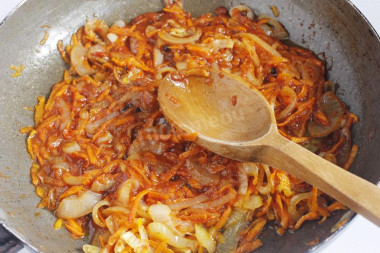
Simmer with constant stirring for 8-10 minutes, then remove the bay leaf. Pour in the vinegar, turn off the stove and let it brew for 7 minutes.
Step 10:
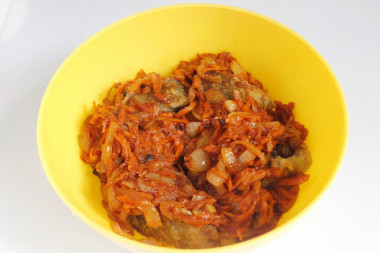
Mix the chilled fish with the cooled marinade. Let it stand for 2 hours in the refrigerator. During this time, the fish will be well soaked and ready to eat. A dish with fish when serving can be decorated with lemon and herbs.
For this recipe, it is better to take not frozen, but fresh fish, otherwise the finished fish risks getting dry.
Since the degree of salinity, sweetness, bitterness, sharpness, acid, burning is individual for everyone, always add spices, spices and seasonings, focusing on your taste! If you put some of the seasonings for the first time, then keep in mind that there are spices that it is especially important not to shift (for example, chili pepper).
Use oil with a high smoking temperature for frying! Any oils are useful only until a certain temperature is reached - the point of smoking, at which the oil begins to burn and toxic substances, including carcinogens, are formed in it.
Unrefined oils, with rare exceptions, have a low smoking point. There are a lot of unfiltered organic particles in them, which quickly begin to burn.
Refined oils are more resistant to heating, and their smoking point is higher. If you are going to cook food in the oven, on a frying pan or grill, make sure that you use oil with a high smoking point. The most common of the oils with a high smoking point: refined varieties of sunflower, olive and grape.
Caloric content of the products possible in the composition of the dish
- Onion - 41 kcal/100g
- Carrots - 33 kcal/100g
- Dried carrots - 275 kcal/100g
- Boiled carrots - 25 kcal/100g
- Boiled pollock - 79 kcal/100g
- Pollock fresh - 72 kcal/100g
- Carnation - 323 kcal/100g
- Bay leaf - 313 kcal/100g
- Whole durum wheat flour fortified - 333 kcal/100g
- Whole durum wheat flour, universal - 364 kcal/100g
- Flour krupchatka - 348 kcal/100g
- Flour - 325 kcal/100g
- Granulated sugar - 398 kcal/100g
- Sugar - 398 kcal/100g
- Wine vinegar (3%) - 9 kcal/100g
- Vinegar 9% - 11 kcal/100g
- Balsamic vinegar - 88 kcal/100g
- Apple vinegar - 14 kcal/100g
- Vinegar - 11 kcal/100g
- Vegetable oil - 873 kcal/100g
- Tomato paste - 28 kcal/100g
- Salt - 0 kcal/100g
- Water - 0 kcal/100g
- Allspice - 263 kcal/100g

